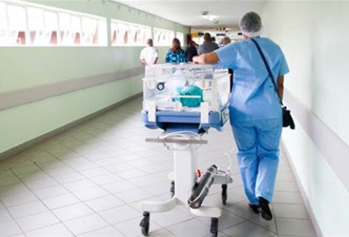Someone out there has broken the upgrade cycle and Rabid is blaming it on memory.
One thing you could always rely on in reseller land was the tax office. Yes, we know, they’re always chasing us and questioning our ‘expense’ claims, but that’s not what we’re talking about. You could always rely on the tax office’s ruling on depreciation and leasing.
Every three years or so, a good percentage of clients would come knocking on the door with a furniture van and a forklift, ready to take away pallets of IT kit to replace the stuff that had been depreciated into negativity, or leased into oblivion, by their trusty accountants.
Now those same customers are sending the IT intern instead. And there’s no van. These dudes come armed with an empty briefcase, which is more than large enough to hold everything on their shopping lists.
Like we said, we blame it on memory. And we don’t mean they forgot what the ATO told them. We mean those sneaky memory vendors who are now selling RAM in tight formation that closely resembles what used to be a highly unreliable stack of whirring, spinning platters.
Yes folks, solid state disks have screwed the upgrade fountain of plenty.
No matter how badly the accountants want to get that depreciated kit off the balance sheets and claim some nice new credits on their IT upgrades, they’re still accountants. They know the difference between the bottom line and being unable to claim credits beyond what you were going to pay in taxes.
We’ve lost count of the number of clients on the cusp of signing on the dotted line for a flock of shiny new servers and PCs, who suddenly switched their order to a briefcase full of SSDs. After all, the most frequent cause of death in IT kit is hard disks, followed closely by power supplies.
Plug’n’play hot swap units solved the failing power supply problem in servers, and all-in-one desktops use wall-warts or laptop-style power bricks to eliminate their fan-related power supply fatalities. And they also use a lot less of the most expensive business cost these days – electricity.
That left the humble hard disk as the major cause of catastrophe. Now SSDs are hardly new. Rabid first started selling them in S-100 bus PCs back in the 1970s. But the price penalty was rather significant, so we only sold them to people who were in serious need of seriously fast data trolling, and not too much data either.
By the 1990s, SSDs had all but disappeared, with their proponents drowning their sorrows as news broke of backroom research at IBM postponing the long-anticipated death of hard disks. Desktops that previously shipped with 40GB drives were now appearing with 200GB drives for the same price. And they also invented RAID.
What started as a way to get massive storage without the price penalty of massive disks soon became an insurance policy for massive disks that were no longer expensive. The acronym remained the same but the ‘I’ now meant ‘independent’ instead of ‘inexpensive’.
And then memory got so cheap you didn’t need to remember to check the bank balance before placing your order. And soon they stuffed those chips into thumb drives. And then they stuffed them into hard drive shells. And offered MTBFs in the zillions of hours. So long HDDs, it’s been nice working with you.
Gotta go! HDD recycle bin is full.





_(11).jpg&h=142&w=230&c=1&s=1)




.jpg&w=100&c=1&s=0)
_(8).jpg&w=100&c=1&s=0)







.jpg&q=95&h=298&w=480&c=1&s=1)





